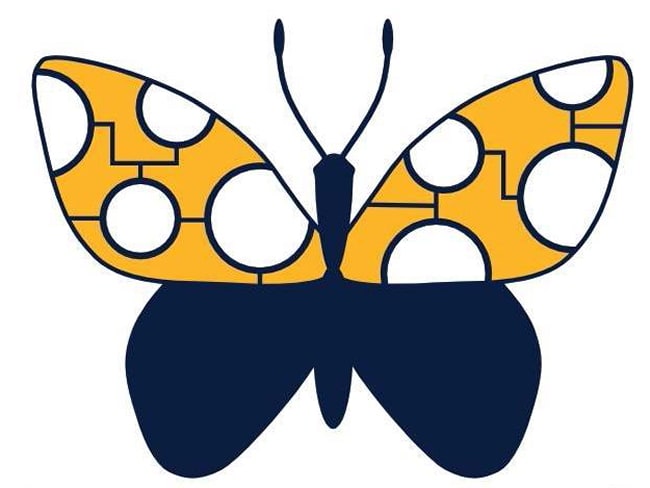Thursday 24th October saw the launch of Butterflies Australia, a new citizen science project aimed at getting Australians involved in building a database of butterfly records, so as to make it possible for scientists to get a much better understanding our our butterfly populations.
To my mind this is long overdue, as despite the fact that most people seem to quite like butterflies our knowledge of them is woefully inadequate. Unless we greatly increase our understanding of their distributions and biology we have virtually no hope of making any meaningful conservation efforts, and now we can all help by contributing records of our butterfly sightings.
I registered as a user on the Butterflies Australia website, and having done so I can use the Sightings Search option to browse through the records that have already been submitted, with options to filter them by family, genus and species. I can also enter records via the My Surveys option; I’ll be doing this during the current butterfly season and in the winter months I hope to get time to go back through my own records and enter details from past expeditions.
I suspect the accompanying phone App will be used to submit more sightings, as it’s very simple to use it whilst out in the field observing the butterflies – provided you’re in mobile coverage of course. I first tried this last weekend when I was at Shoal Bay looking for Copper Ant-blues (Acrodipsas cuprea). I had intentionally not attempted to try using the App for this beforehand, so I could see how easy it might be to submit a sighting in the field with no previous experience. I found it very easy, except that the Submit button was not as obvious as it might be, so for a while my Survey was complete on my phone but had not been submitted to the database.
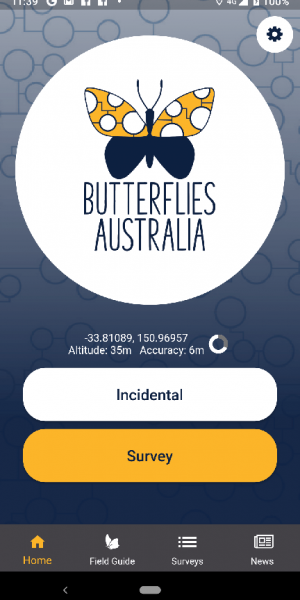
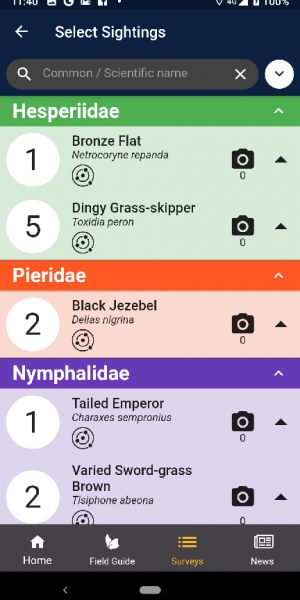
The App also has a Field Guide; whilst it’s still a work in progress I think it will become an invaluable resource. It allows you to easily browse through all the Australian butterfly species; for most of them it provides photos, descriptions, notes on behaviour and habitat, and distribution maps.
I really like the distribution maps; if you tap the map it displays a scaleable version with a blue dot representing your current position. My only quibble is that the species’ distribution is shown with a uniform green colour; I’d have liked to have seen different colours for the various subspecies (where applicable).
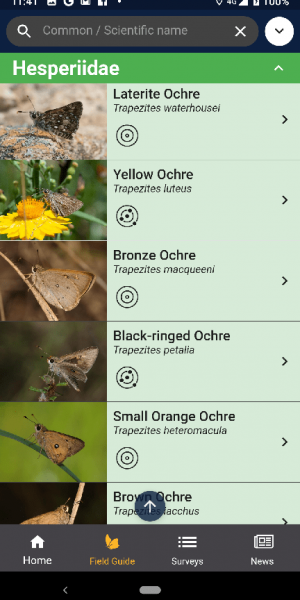
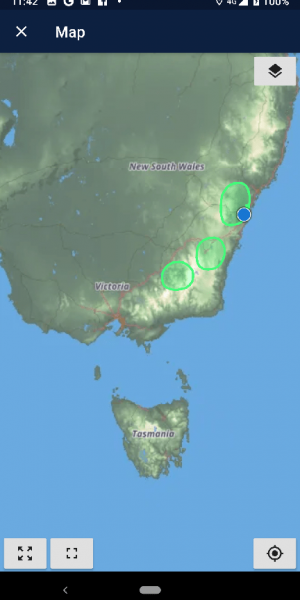
I must admit, I have spent quite a bit of time browsing through the photos in the field guide. It contains several shots of many of the species, though it’s not always very obvious that more than one shot is available. Where you see some white dots across a photo it means there are others to see, which you can view by swiping. Just like with Tinder, when you swipe you may just see something you fall in love with…
A number of people have contributed photos for the Field Guide; I have found Geoff Walker‘s Toxidia senta, Todd Burrows‘ Delias argenthona and Christine Darwood’s stunning female Acrodipsas myrmecophila (upperside!) to be particularly lustworthy. The guide has quite a number of my own photos as well, which I’m rather happy about.
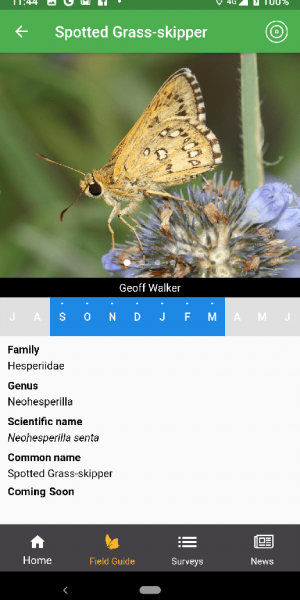
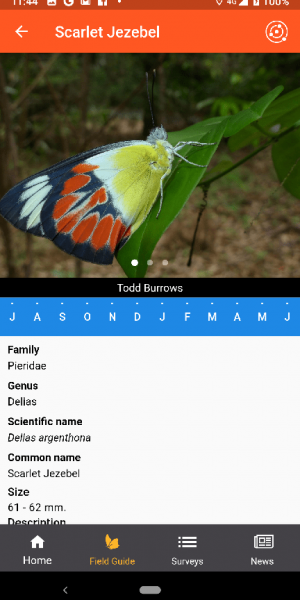
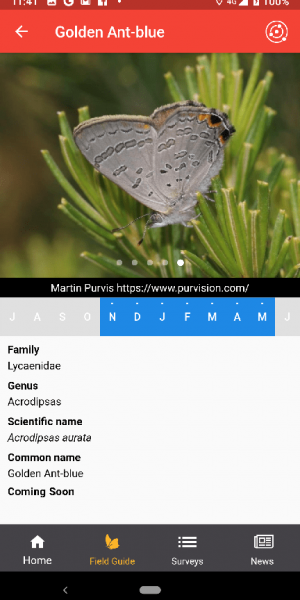
It doesn’t cost anything to register on Butterflies Australia, and the App is free too (available in the Google Play store for Android devices and the Apple store for iPhones and iPads). I urge anyone with any interest in our wildlife – not just butterflies – to get involved and log their butterfly sightings. The more records we all contribute the more valuable the database will become, and all the data will be included in the Atlas of Living Australia too.

